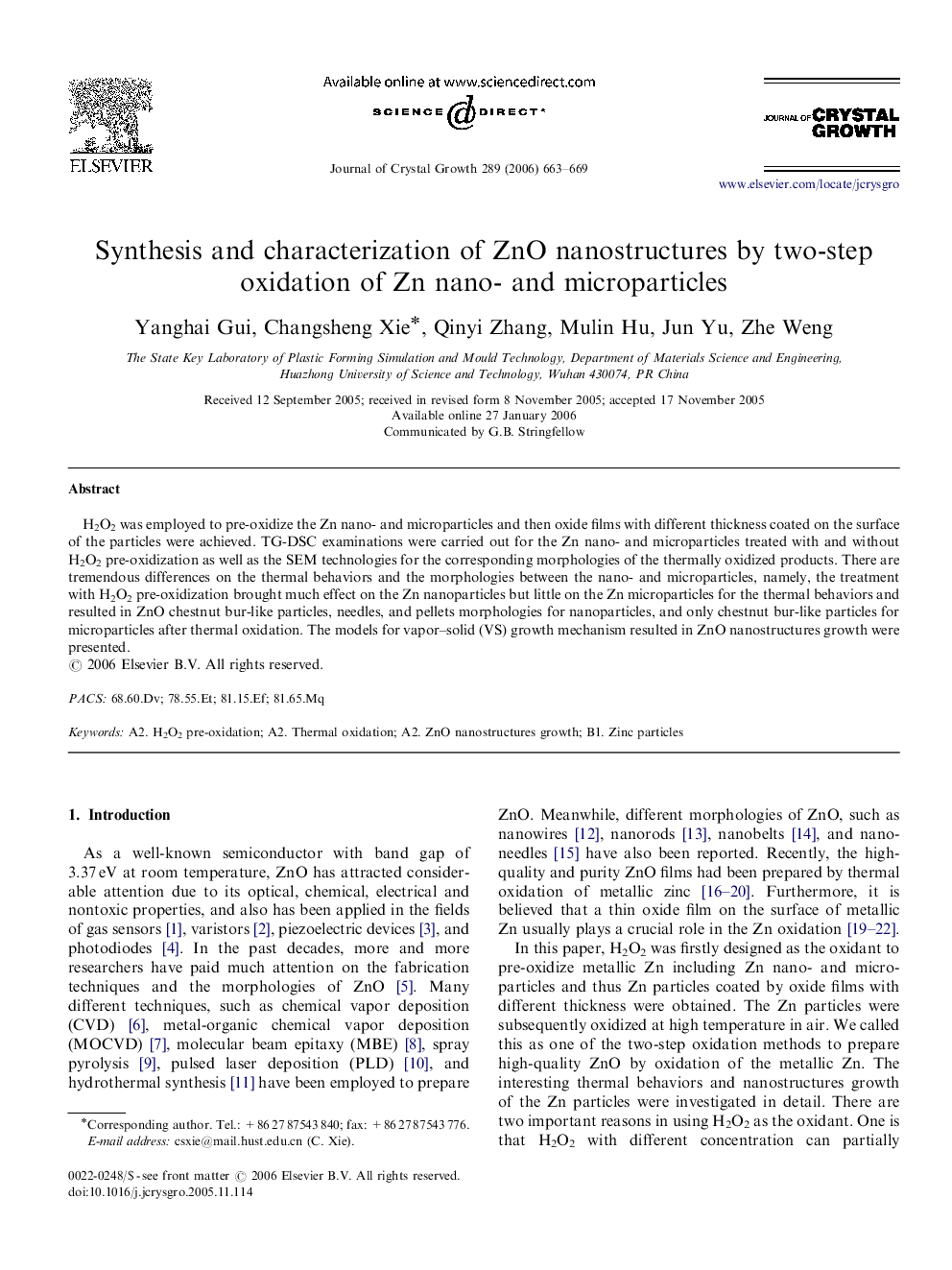| Article ID | Journal | Published Year | Pages | File Type |
|---|---|---|---|---|
| 1796639 | Journal of Crystal Growth | 2006 | 7 Pages |
H2O2 was employed to pre-oxidize the Zn nano- and microparticles and then oxide films with different thickness coated on the surface of the particles were achieved. TG-DSC examinations were carried out for the Zn nano- and microparticles treated with and without H2O2 pre-oxidization as well as the SEM technologies for the corresponding morphologies of the thermally oxidized products. There are tremendous differences on the thermal behaviors and the morphologies between the nano- and microparticles, namely, the treatment with H2O2 pre-oxidization brought much effect on the Zn nanoparticles but little on the Zn microparticles for the thermal behaviors and resulted in ZnO chestnut bur-like particles, needles, and pellets morphologies for nanoparticles, and only chestnut bur-like particles for microparticles after thermal oxidation. The models for vapor–solid (VS) growth mechanism resulted in ZnO nanostructures growth were presented.
